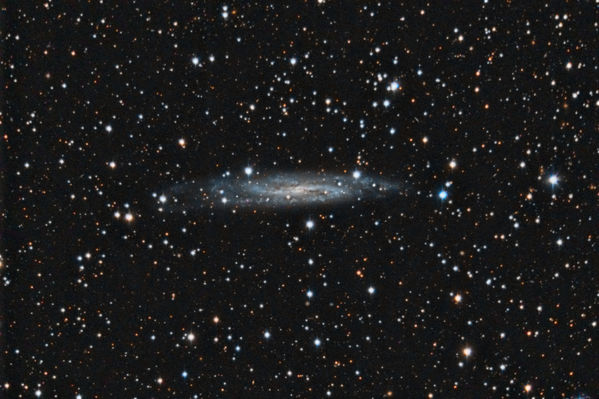It's been quite a while since I've had any data to process or to post. But I finally had some time to image in August and here is what I got.
It is NGC 7640, a spiral galaxy in Camelopardalis. It is a fairly dim object. I did practically all of my processing in PixInsight (final touch up and save for web in Photoshop

), and the
video tutorial on LRGB processing was excellent. The color balancing and background neutralization tools are great and easy to use.
The tutorial does show use of HDR Wavelets without a star mask (using lightness mask instead) so I used that technique here. Not sure if that is a best practice.
Another step I added was to crop off the edges of all the sub-frames and then rescale the images prior to combining into the original RGB. The aligned images have 5-10 pixels around the edge that are not complete from my dithering. This area tends to have pixels with very low values, lower than the general background of the image. Doing this, my initial RGB is much closer to balanced then when I do not. I trust that a rescale is not changing the linear nature of the images -- after all, PixInsight does rescale any floating point image whenever it is opened.
I still struggle with curvature in the field that leads to some odd shaped stars and some color halos. But overall I am reasonably happy with the result. A new scope is on order so I expect better optics will help with the curvature.
All comments and suggestions are welcome.

This is 70 minutes luminance and 20 minutes each RGB with an ST-10 on a C-11 @f6.3.
Clicking on the image will take you to my gallery and the ability to get to a full-sized image.
Thanks for looking,
--Andy